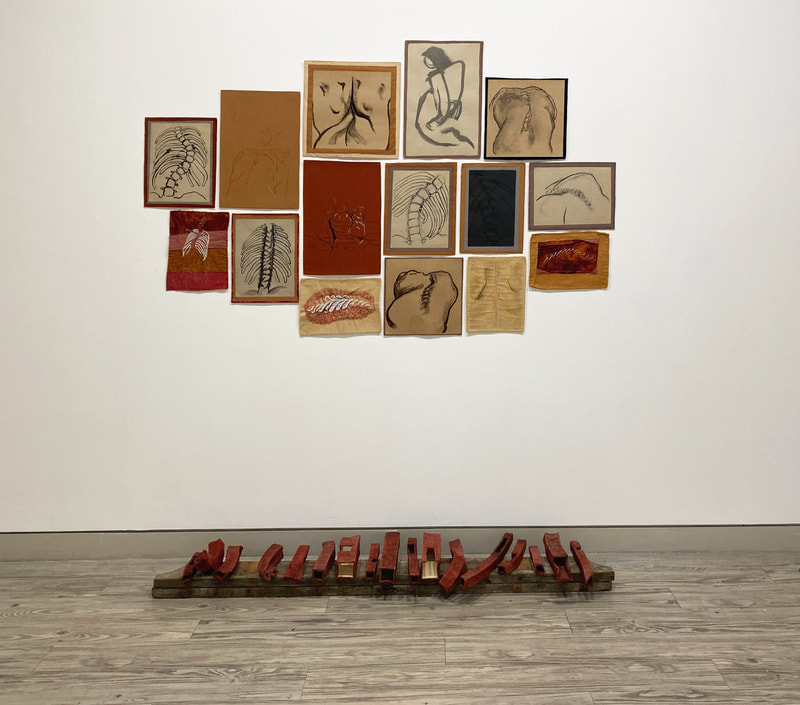Ceramic
Sculpture & Installation
(2021)
|
Necessary Adjustments
2021 Cotton, felt, porcelain, embroidery thread Dimensions vary (approx. 22” x 21 ¼” x 21 ¼”) Necessary Adjustments utilizes porcelain sculptures, fabric, and a small ink drawing to reference the physical spine exposed during a spine surgery. At the bottom right of this piece there’s an ink drawing on light gray fabric that illustrates a pedicle screw on light gray fabric. The porcelain sculptures themselves were created while I was recovering from my 13-level spinal fusion surgery. Immediately after surgery, it was required that I walk five times a day for six minutes at a time (longer as I could tolerate the physical exertion and pain). As such, each sculptural piece became a physical manifestation of those six minutes and was imbued with the pain and healing that occurred simultaneously during each walk. |
|
|
Nonlinear Healing Map
2021 Paper, felt, cotton, embroidery thread, charcoal, ink, wood, clay, Rit dye Dimensions vary In Nonlinear Healing Map, a cluster of drawings and embroideries are mounted on the wall above a sculptural installation made of extruded clay and found wood. The drawings and embroideries depict gestural and expressive representations of my physical body before, during, and after my spine surgery. Each individual piece combines multiple mediums, such as ink and charcoal drawings on paper that are sewn into cotton and felt with embroidery thread. The extruded clay cuboids in this installation are lined up in a row beneath the cluster of 2D works. They could be interpreted as a linear representation of time, or as a reference to the spine itself. Their linear formation contrasts the non-linear narrative of the embroideries above, which present the shape and state of my physical body simultaneously in the past, present, and future. |
|
|
Structural Limitations
2021 Clay, Rit dye, disposable hospital pad, Dimensions vary (approx 30”x30”x12”) Extruded hollow cuboids made of clay are stacked in an organic formation atop a disposable medical pad commonly utilized in hospitals and medical facilities. The extruded ceramic forms are especially fragile because of their hollow interiors, which make them ever more prone to breaking and fractures, even a short fall. The sculptural element of the piece was built up intuitively, as tall as I could possibly stack the ceramic forms before the entire structure would have collapsed on itself from any additional shift in weight distribution. The precarious arrangement of the ceramic forms starkly contradicts their sturdy appearance, which could be mistaken for a pile of twisted metal rather than hollow clay forms. The tension created by the conscious use of materials that deceive the true nature of their physical properties can also be interpreted as a metaphor for the physical body. |
|








